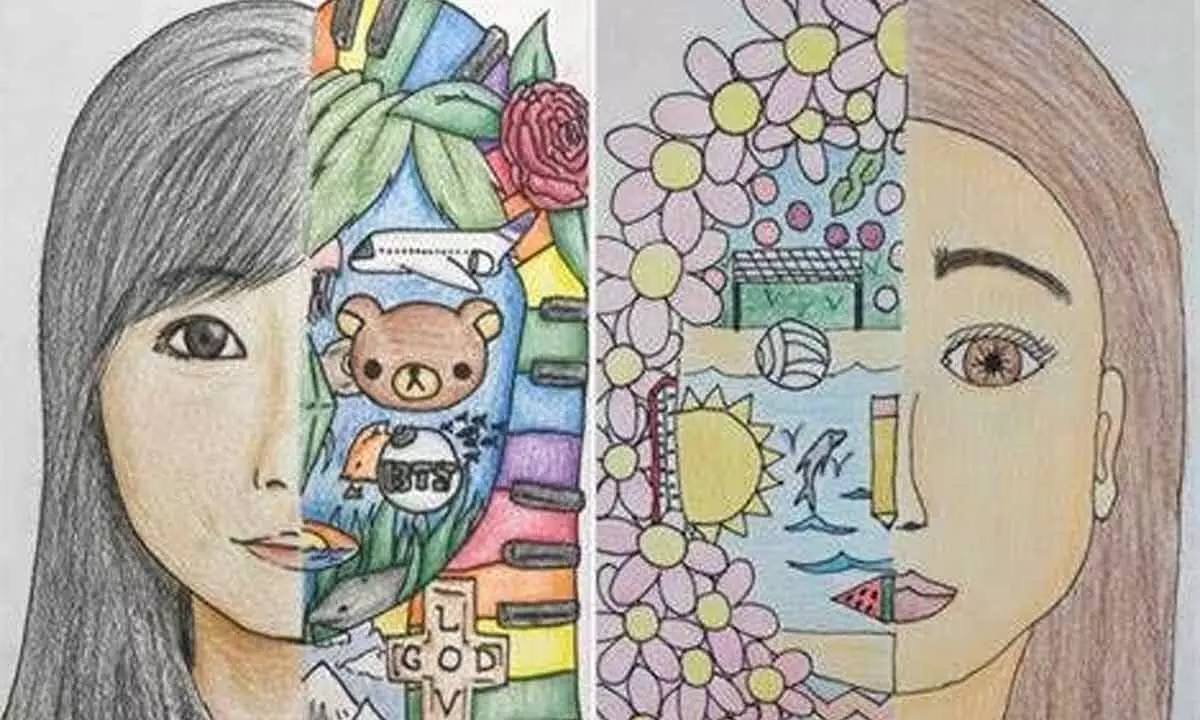Why Art is good for Mental Wellbeing?

Why Art is good for Mental Wellbeing?
- There is unknown link between art and mental wellbeing, if you wish to have good mental health, inculcate habit of doing art, it could be knitting, painting, gardening, music, dance and so on.
- Patients are able to come out depression, when they indulge in any hobby, the pain is not forgotten, but is gets hidden, because the individuals focus is on art.
- Those individuals who are able to focus mostly succeed and the art helps you to focus.
Art and mental health have a close connection, in any form, art definitely serves as significant tool in order to turn intangible experiences into something, which we can not only see but also touch.
When you think of Paul Cezenne, who during his dark period, was able to depict his depression in paintings, such as the Pyramid of skulls and the Murder. Or Van Gogh, who showed evidence of his hallucinations in "starry Night" which he painted from the window of his asylum room.
During Van Gogh's time, many of the mental health challenges we know today, were not clinically recognized. Today, mental health professionals not only posses a better understanding of their patient's illnesses, but they sometimes use art and art therapy to communicate with their patients and aid their recovery.
Terry Rustin, a psychotherapist who uses visual art to connect with his patients. He listens as they describe their feelings puts himself in their shoes and creates a painting ( or visual Psychodrama as he calls it) of what they feel.
For him, this process helps to understand better the stress his patients feel. For his patients, the effect is significant. Seeing their feelings painted out assures them that their doctor is listening and can almost feel what they feel. This encourages them to open up to Rustin, eventually leading to better to psychotherapy results.
Rustin's results are not a coincidence. What he practices is a branch of therapy known as art therapy. So far, his methods have helped him to progress with his mental health patients.
The Art of Art therapy
Practitioners base art therapy on the idea that creative process of art making provides healing and life enhancing benefits. Therapists consider it a nonverbal form of communication. Mental health professionals first recognized this form of therapy in the US in the late 1960s.
These practitioners also base art therapy practices on the theory that we cannot verbally access and reproduce all human thought. Sometimes, we require to resort to our preverbal instincts involving symbolic language. The study suggest that the people's ability to create remains long after their mental ability to create speech is lost. Therefore, art therapy can be used by anyone who still retains their physical ability to participate.
The relationship between the patient and therapist during art therapy is quite delicate. The art creator could be either of both parties. One party establishes a creative environment and the other is encouraged to explore and understand the situation using art.
Art therapy is not about the perfection of the art. Its about the mental health benefits we can derive from participating in the art.
Art good for mental health
Over a period of time, therapist have wormed with patients in order to relieve the several types of mental health issues through art creation. Some of the benefits of using art for mental health.
Research has stated that art therapy provides relief from mental health disorders. Creating art enables individuals to let go of their worries or anxiety and at the same time focus on the task ahead. Art therapy is an option for people who experience mental health related stress symptoms but already take a lot of medication.
In one case report, a dementia patient who was already on numerous medications was experiencing stress related symptoms. He was able to get by drawing and painting daily. His family revealed that his behavior and communications skills at home also improved.














